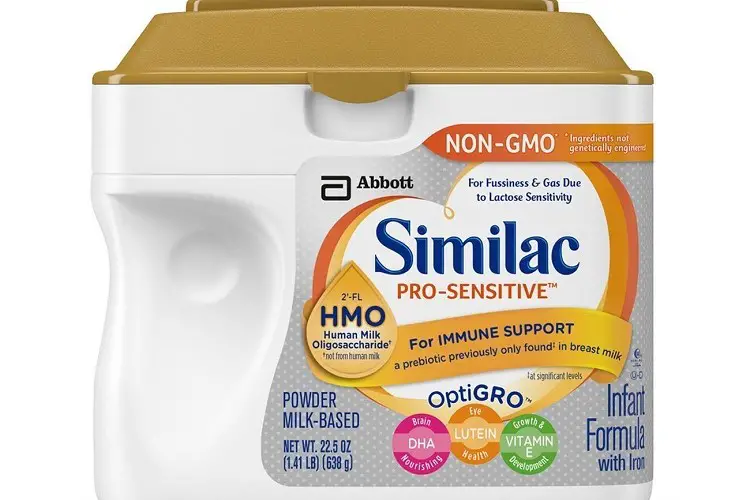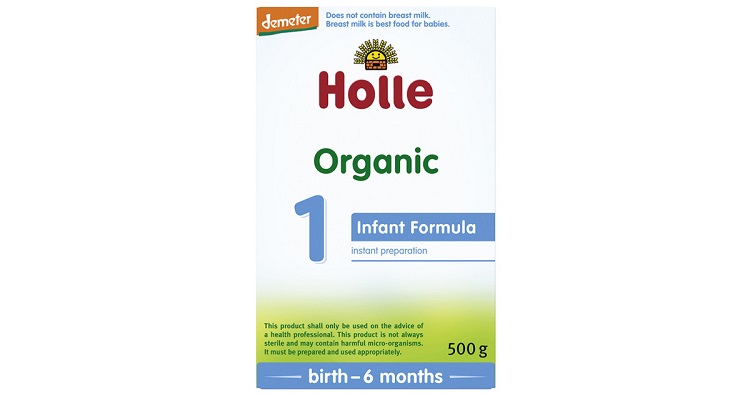Choosing the right formula for your baby is crucial for their overall development and should not be overlooked. It is one of the most important things your baby needs for growth and well-being.
Similac and Holle Organic are two different brands of baby formula, each with its unique features and ingredients.
We consider the ingredients used and cost when choosing between Similac vs Holle infant formula.
Similac uses a blend of non-organic and organic ingredients, while Holle uses only organic ingredients and no artificial preservatives, colors, or flavors. Holle can be more expensive due to its organic ingredients.
This article will give you a detailed comparison between Similac and Holle to guide you in choosing your formula.
Similac Vs Holle: Overview
When choosing between Similac and Holle, there are several factors to consider.
Similac is a highly recognized brand in the United States for producing various infant formula products. In contrast, Holle is a German brand specializing in organic infant formula options.
One of the most important considerations is the ingredients used in each brand’s products. Similac uses non-organic and organic ingredients, whereas Holle uses only organic ingredients.
Furthermore, Holle has a strict policy against using artificial preservatives, colors, or flavors in their products.
This means Holle’s formula is free from potentially harmful additives that may negatively impact a baby’s health.
Another key factor to consider is the cost of each brand. Similac generally tends to be more affordable than Holle, but this may be due to the difference in ingredients used.
Holle’s organic ingredients can result in a higher price point, but many parents may feel that the added cost is worth it for their child’s safer and healthier option.
Ultimately, the decision between Similac and Holle will depend on personal preferences and priorities.
Some parents may prioritize affordability, while others may prioritize organic ingredients. Doing thorough research and consulting with a pediatrician before deciding is important.
Similac

Similac is a well-known infant formula brand produced by Abbott Laboratories, which has solved the formula needs of many mothers because of the varieties of formulas they produce.
It is a global healthcare company. Its existence spans years in the formula market, and they offer a range of formulas catering to different age groups and specific needs.
Similac offers a variety of formulations tailored to different stages of infant development, such as Similac Advance, Similac Pro-Advance, Similac Sensitive, and of course, Similac Organic Baby Formula, which is made with Similac’s OptiGro mixture of healthy vitamins for your baby’s growth.
The Similac Organic Formula prioritizes your baby’s physical and mental development. The milk utilized in the formula is organic, enhancing its nutritional value.
Additionally, it dissolves easily in water, making preparing for your infant more convenient than other similar formulas.
In general, Similac formulas are designed to meet the nutritional needs of infants and provide the necessary vitamins, minerals, and other essential nutrients for healthy growth and development.
Features
- Contains ingredients like cow’s milk-based proteins, vegetable oils, lactose, and added vitamins and minerals.
- Available in various formulations, catering to different baby needs, including those with sensitive tummies or lactose intolerance.
- Widely available in most stores and pharmacies.
- It contains 2’-FL HMO
- It contains DHA
- It contains Lutein
- It contains Vitamin E
Pros
- Improved Eye Q plus nutrition
- Contains DHA that supports brain and eye development
- In general, the formula doesn’t form clumps. Therefore, you can be confident that you’ll have a uniformly mixed bottle every time you use it.
- You can buy it online or in-store, making it convenient to purchase in bulk or quickly when needed.
- Providing your baby with the OptiGro nutrient blend is crucial, as it plays a significant role in their overall growth and development.
- For certain babies, formula could be a great choice when transitioning away from breastmilk or for parents who want to mix formula with breastmilk.
Cons
- While the formula mixes well, it may produce a relatively foamy texture, which some may not consider ideal.
- Parents may not be pleased to see that organic sugar is one of the top ingredients in the formula.
- It contains Soy Oil.
- Similac baby formula is denser and contains bigger proteins, which can challenge an infant’s digestion.
Holle Organic

Holle is a German brand that is best in what they do, which is the production of organic baby formula. It is known for its commitment to using organic ingredients and adhering to strict quality standards.
One beautiful thing about the Holle formulas is that they are free from synthetic additives, artificial preservatives, and genetically modified organisms (GMOs).
There are various formulas, including cow’s milk-based, goat’s milk-based, and specialized options for different stages.
Most parents go for Holle because of its focus on organic ingredients and more natural approach to formula feeding.
Features
- Emphasis on using organic and biodynamic ingredients, avoiding synthetic chemicals and pesticides.
- Holle offers both cow’s milk and goat’s milk-based formulas.
- Limited range of products compared to some other mainstream brands.
- Available in select specialty stores and online retailers.
- It contains organic lactose for energy
- It is enriched with iron lactate for protection against anemia.
- It is fortified with minerals and vitamins.
Pros
- Their products are non-GMO
- Their products are organics.
- It has zero soy, granulated sugar, wheat, or peanut ingredients
- Gluten-free
- It is shelf stable
- Free from preservatives, chemicals, and artificial flavor.
- This formula is suitable for babies prone to constipation as it does not cause excessive gas or discomfort for most infants.
- Most babies with issues digesting milk will probably find this easier on their stomachs.
Cons
- It contains starch and maltodextrin
- Uses fish oil in some of its formula
- Getting hold of the Holle formula might take longer than expected as it is only available on the Holle website or on U.K. Amazon.
- The formula comes in different stages, and you might need to switch to the next stage, but there is a possibility that your child may not take well to it.
- You can get a better deal on the formula by purchasing directly from HolleUSA, but if your baby doesn’t like it, you’ll be left with excess formula.
Similac VS Holle: General Comparision
Getting a formula for your baby hasn’t always been easy, and you should know that when comparing formulas, it’s essential to consider your baby’s specific nutritional needs, dietary restrictions, or allergies.
Also, your preferences regarding organic or non-organic products should be considered.
Always consult your pediatrician or healthcare professional before significantly changing your baby’s diet.
Similac and Holle will be compared using these key factors to enhance clarity.
Ingredients:
Similac formulas are typically made from cow’s milk, vegetable oils, and vitamins and minerals. Some Similac formulas may contain added prebiotics and probiotics to support a baby’s digestive health.
Holle formulas are made from organic cow’s milk sourced from biodynamic farms, which prioritize sustainability and natural farming practices.
Holle formulas also contain organic vegetable oils; some variants are free from added sugars and other artificial additives.
Organic vs. Non-Organic:
Similac has a wide range of formulas which may be organic or not, while Holle is primarily known for its organic baby formula line, which is ideal for parents who prefer products made from organic and biodynamic ingredients.
Specialized Formulas:
Both formulas have a variety of formulas that can suit babies with different health conditions, and any of them will surely be wonderful for your baby, provided your baby’s condition matches their specifications.
Availability:
Similac is widely available in many countries, grocery stores, pharmacies, and online retailers.
At the same time, Holle products are typically more prevalent in Europe, particularly in Germany, where the brand originates.
Additives and Fillers:
Some Similac formulas may contain additional ingredients such as DHA, ARA, and prebiotics.
In contrast, the Holle formula aims to keep additives and fillers to a minimum, focusing on providing nutrients in a more natural form.
User Reviewers View
Similac User Reviews
I started giving my baby formula at six months old. It’s now about half and half with breast milk at eight months. I was initially worried since my baby can be picky and fussy, but she’s had no issues and seems to like it just as much as breast milk. Plus, it’s organic, so I feel good about it. – Will on Amazon.
I was thrilled to see that Similac now has an organic baby formula. I got it for my grandson, so it’s convenient to have on hand. The shipment arrived quickly, and it’s reassuring that he’s getting formula made with organic milk. We’re all satisfied with the product and the buying experience through Amazon..” – Mary Ann on Amazon.
Holle User Reviews
This milk formula from Holle is the best and most natural one I have tried. The other major brands we tested smelled terrible, like rotten eggs or too chalky. I had difficulty giving them to my newborn, but I had no choice since he had to eat, and my breast milk wasn’t enough. Holle saved the day. – Irina on Amazon.
I’m really into this formula, but it’s nowhere to be found in the USA! Surprisingly, I ordered from a UK company and got it in less than two weeks. My little one seems to enjoy it, and we haven’t had any issues with it. No, spit up, gas, or colic. And it’s organic and from biodynamic farming is a huge plus.”- Heather on Amazon.
Related Posts:
- Similac vs Bobbie
- Holle vs Hipp vs Kendamil
- Similac vs Isomil Formula
- Similac vs Enfamil vs Kirkland
- Similac vs Lactodex – Which is Better?
Similac vs Holle: Final Verdict
When it comes to feeding your baby, there are no hard and fast rules stating that you must opt for organic formula.
However, if you prefer to go organic with everything else, it certainly won’t hurt to choose organic formulas.
Many options are available to you, but Holle and Similac are two high-quality brands to consider, offering excellent nutritional benefits.
If your baby tolerates and digests the Similac Organic Formula well, it is likely better than Holle and Similac organic formula brands.
However, if your infant experiences adverse reactions to the Similac option, you may need to try other options.
In that case, I would recommend Holle in this situation as I have greater trust in the quality of its ingredients, despite it being slightly more expensive.
Conclusion
Hopefully, this article has given an in-depth discussion on Similac vs Holle.
Both are milk-based formulas with high nutrient content, vitamin, and mineral values. They are both good for the holistic development of your child.
Babies have different choices, so it is advised that you give your baby what he or she wants, and if you are confused, then seek the advice of your pediatrician.
No brand has it all hence the idea that there can never be a perfect baby formula. Try as many brands as possible; it won’t be as rich as breast milk.
Though they can try to a good extent to mimic the constituents of breast milk in their manufacture to a reasonable extent, they can never be the same as breast milk.
If you can get a formula that is ideal for your baby or you think can be tolerated by your baby’s delicate system, go for it, provided you are at home with it.
When choosing Similac vs Holle, it’s essential to consider your baby’s specific nutritional needs, any potential allergies or sensitivities, and your preferences regarding organic products.
Always consult your pediatrician before changing your baby’s feeding routine to ensure they receive the appropriate nutrition for their growth and development.
